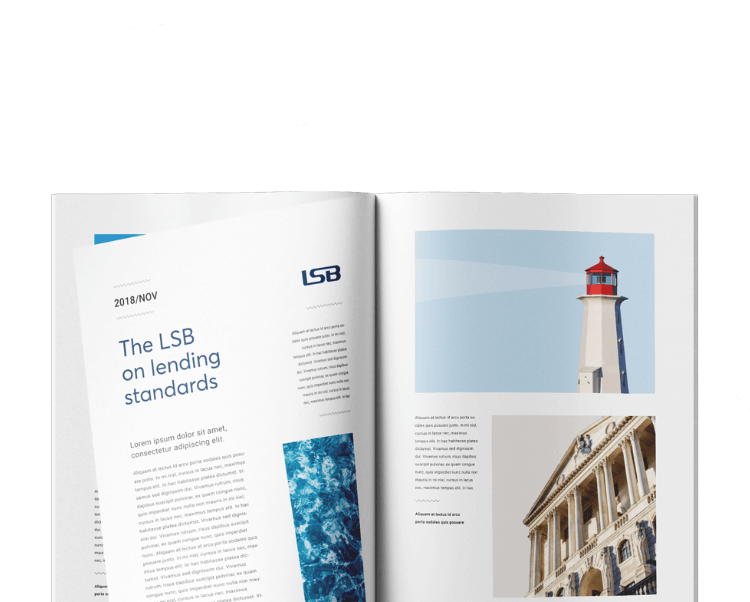Introduction
There are a plethora of legal and regulatory requirements involved when delivering financial services to customers within the UK. These rules are constantly evolving to address emerging products and risk areas, with regulators having to work quickly to protect customers. Banks, lenders, and debt collection agencies or purchasers also have to cater to the wide variety of customers who may access their products or services. These customers may have additional support needs that require addressing, and firms need to flexibly deliver such help when the time arrives.
For smaller firms or new entrants to the market such as start-ups or fintechs, it may seem that statutory rules and regulations are challenging enough to deal with. To go beyond it and implement additional self-regulatory best practices, like the Standards of Lending Practice (the Standards)[1], may seem desirable but unrealistic. These new or smaller firms may feel that to adhere to the Standards requires greater levels of resource than they currently have. Whilst senior leadership may recognise the value of being a registered firm, it may seem something ‘for later,’ perhaps when the firm is more established or has increased capacity.
Purpose
This is the introductory piece in a series aimed at making two key points. Firstly, that the Standards and registration to the LSB is designed for any applicable firm keen to implement best practice and deliver better customer outcomes. Secondly, the series will look at how this can be achieved regardless of size or resource.
The series will explain that by considering your existing approach and focusing on good outcomes, the Standards can be embedded in a proportionate and achievable manner. It will discuss how to do this and the support that the LSB offers throughout the process. This relates to both the onboarding of interim registered firms and the relationship management of those who have become fully registered.
The series will consist of three parts focusing on governance, oversight, and training. These are three key areas that are a central plank to delivering the Standards. By reviewing the ideas and insight presented within the series, potential registered firms should see how it is likely they are already in a position to approach registration.
Below is a brief summary of those parts we will be covering in the coming months. If you have any questions about it or would like to discuss how the Standards can apply to and benefit your firm and customers, please contact us using the details at the end of the piece.
- Governance
It is important for firms to not only do the right thing by their customers but to be able to demonstrate that they have done so. Senior management within the firm need to have confidence that they are delivering the Standards through ‘systems, controls and governance arrangements’ that give them effective oversight.[2] There are a number of important factors to consider when it comes to those governance arrangements, including:
Policies and processes – staff need to understand the parameters by which they work and the standards that are expected of them. Having clear, accurate, and accessible policies and processes enable this. Firms should look to review existing documents with an eye on whether they are reflective of both current ways of working and best practice. This can be achieved by involving management or other specialists from the first line who use those processes on a regular basis. The LSB is also available to offer support and guidance on implementing the Standards and best practice measures, for example through its Insight & Support[3] function.
Risk management frameworks – these provide senior leadership with a view of the risks affecting both the firm and customers, and frameworks should include the steps being taken to mitigate those risks. The Standards explain that these frameworks should be ‘appropriate to the size of the firm’ and so are not expected to be exhaustive lists of speculative events. Instead, the risks affecting good customer outcomes should be identified and consideration given to what counters them.
Identifying failures – there will be times when processes fail or customers are not treated as expected. When this occurs, firms need to record the breach, resolve it, and remediate with the customer where appropriate. Reporting such breaches to the LSB is an important part of this. As a registered firm, an LSB Compliance Manager would work with you to ensure any corrective actions are appropriate and followed up.
- Assurance
Senior management need confidence that customers are being treated correctly. One way of gaining this confidence is by having strong assurance measures on the first line. These checks should be focused and recorded, with both individual staff members and the firm as a whole learning from their results.
Quality assurance – quality assurance (QA) checks should be regularly completed at key points in the customer and product journey. This helps ensure that staff are doing as expected and that process elements are being properly completed. When issues or examples of good practice are identified, there should be action taken. This could include delivering feedback and training when appropriate or relaying good examples to use in training or team meetings.
Vulnerable customers and financial difficulty – The Standards specifically mention that assurance measures should be in place to ensure that vulnerable customers or those in financial difficulty are treated correctly. Along with delivering individual feedback, firms can utilise what is learnt through QA checks to influence the continual development of policies and processes. For example, if QA is finding that the handover between customer contact agents and specialist teams is often inadequate, it may be a result of the process rather than individual agent behaviour.
Customer journey reviews – firms can learn a huge amount about the outcomes they are delivering by completing customer journey reviews. Sometimes risks or areas for improvement are not easily identified in isolation (for example, by completing QA checks on one particular area). It is only by going through the journey as the customer does that blind spots may become visible and areas for improvements identified.
- Training
Staff are only able to deliver the best outcomes by being well trained and confident in their roles. Delivering good training helps empower staff to have a flexible approach, whilst understanding the technical and process requirements of their position. Firms need to ensure that their staff are trained to deliver the Standards and that the right behaviours are promoted during such training.[4] These behaviours should reflect the firm’s overall culture and message from senior leadership.
Format – the size and resource available to firms may dictate how training is delivered. For example, if recruits are fairly rare then it may be up to line managers to get them up to speed without the input of a separate training department. Alternatively, some training modules may be completed remotely through online learning or other mediums. However it is delivered, training needs to be effective and give staff the opportunity to ask questions when unsure. It should also be risk based so that key areas (such as the treatment of vulnerable customers) receive enough attention.
Skilled trainers – it is not easy to deliver interesting and informative training sessions. For this reason, training should not be delegated to staff such as first line management without them being upskilled first. Having ‘train the trainer’ sessions can help improve the quality of training and in turn the skills of those on the first line. As a registered firm, you can access the knowledge and resource of the LSB’s Insight & Support team who can deliver certain training topics themselves and share best practice on how to do so to your teams.
Refreshed – in the same way that regulation and best practice is always evolving, so should any training material or delivery channels. It may be that there are new or better ways to explain subjects or to engage with staff, and regularly refreshing training allows for this to take place. It should be established who is responsible for reviewing training for accuracy and accessibility. This mitigates the risk of training being missed during regular reviews and inaccuracies building up over time.
If you are interested in learning more about the LSB or becoming a registered firm, contact us at insight@lstdb.org.uk or use the details below.
Contact details
Anna Roughley – Head of Insight & Support
annaroughley@lstdb.org.uk – 07392 867 176
Harry Hughes – Senior Insight & Support Manager
harryhughes@lstdb.org.uk – 07387 108 498
[1] The Standards of Lending Practice
[2] The Standards of Lending Practice, Governance and oversight
[3] LSB, Insight & Support
[4] The Standards of Lending Practice, Product sale
Download a PDF version of Standards for all – introduction.






